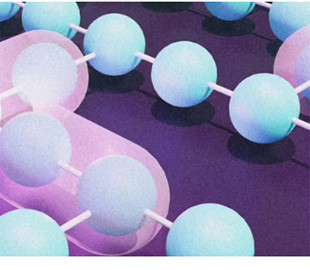
Earlier this year, experiments exceeded expectations, by expanding the limits of possibilities of classical calculations. Not only was the classical binary technology able to solve a problem that was considered accessible only to quantum computers, but it also surpassed it.
Now physicists from the Center for Computational Quantum Physics at the Flatiron Institute in the US have explained this advance, which may help to better define the boundaries between two radically different methods of computation.
The challenge is to simulate the dynamics of the so-called transverse field Ising model (TFI , which describes the alignment of quantum spin states between particles distributed in space.
Given the nature of the problem, it was considered an ideal object to test the current limits of quantum computing, which uses the mathematical basis of the probability of the existence of invisible particles in in an uncertain state.
Despite the successful test, subsequent experiments have shown that classical computers can also cope with this task.
According to Joseph Tyndall and Dries Sells of the Flatiron Institute, this was made possible by a phenomenon called confinement, when extremely stable states appear within the complex interaction of particles, which give classical computers the opportunity to simulate the situation.
“We didn't really introduce any advanced technology,” says Tyndall. “We just put a lot of ideas together in a compact and elegant way that solved the problem.”
200% Deposit Bonus up to €3,000 180% First Deposit Bonus up to $20,000Quantum Confinement
Confinement makes it easier to solve a problem. (Lucy Reading-Ikkanda/Simons Foundation) Key to the study was the discovery of confinement in the TFI model and the use of this phenomenon. Confinement — this is not a new phenomenon, but it has not been associated with this model until now.
Confinement keeps particles in smaller groups, limiting available energy and creating barriers to the propagation of the entangled patterns characteristic of quantum physics. It is like solving a small part of a huge puzzle, instead of solving the whole.
Through a series of simulations and calculations, the research team was able to demonstrate that classical computer algorithms can describe what happens in the TFI model , while more efficient and accurate than quantum computers.
“In this system, the magnets don't just spread out,” Tyndall says. “They will actually oscillate around their initial state, even on very long time scales.”
“This is quite interesting from a physical point of view, because it means that the system remains in a state that has a very specific structure, rather than being completely disordered.”
The obtained results define the limits of what can be expected from quantum computers, in particular, what tasks they can perform that classical systems cannot (now we we can cross it off this list). However, many of these possibilities have yet to be realized, and scientists continue to test these systems to see what is possible.
“There is a line that separates what a quantum computer can do from of what classic computers can do, Tyndall says.
“Now that line is extremely blurred. I think our work helps clarify that boundary a bit.”
The study was published in Physical Review Letters.

